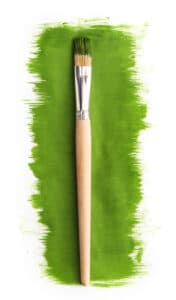
One of the most common types of brush strokes is the flat brush stroke. This technique involves using a flat brush to create broad, smooth strokes on the canvas. Artists us Flat brush strokes to fill in large areas of the painting and create a sense of unity and balance. Artists can vary the pressure and angle of the brush to create different effects, such as blending colors or creating sharp edges.
Another popular brush stroke technique is the impasto stroke, where thick layers of paint are applied to the canvas using a palette knife or a bristle brush. This technique adds texture and dimension to the painting, creating a three-dimensional effect that can be visually striking. Impasto strokes create a sense of movement and energy in a piece of art, as the thick layers of paint catch the light and create shadows on the canvas.
A more delicate brush stroke technique is the glazing stroke, where thin layers of transparent paint are applied over dried layers of paint on the canvas. This technique allows artists to build up layers of color and create a luminous, translucent effect in their paintings. Glazing strokes can be used to create subtle shifts in color and add depth to a painting, as the layers of paint interact with each other to create a sense of depth and richness.
In contrast, the dry brush stroke technique involves using a dry brush with very little paint to create a rough, textured effect on the canvas. This technique is often used to create a sense of movement or spontaneity in a painting, as the rough brush strokes create a sense of energy and movement on the canvas. Dry brush strokes can also be used to create a sense of age or decay in a painting, as the rough texture of the brush strokes can evoke the passage of time.
Overall, brush strokes are an essential tool for artists to express their creativity and bring their vision to life on the canvas. By experimenting with different types of brush strokes, artists can create a wide range of effects and convey a variety of emotions in their paintings. Whether using flat brush strokes to create unity and balance, impasto strokes to add texture and dimension, or glazing strokes to create a luminous effect, artists can use brush strokes to bring their paintings to life and connect with their viewers on a deeper level.
Looking to learn more about painting and brush strokes? Yarnell School Online is the perfect way to learn all of the painting tips, tricks, and nuances of painting with acrylic on canvas.